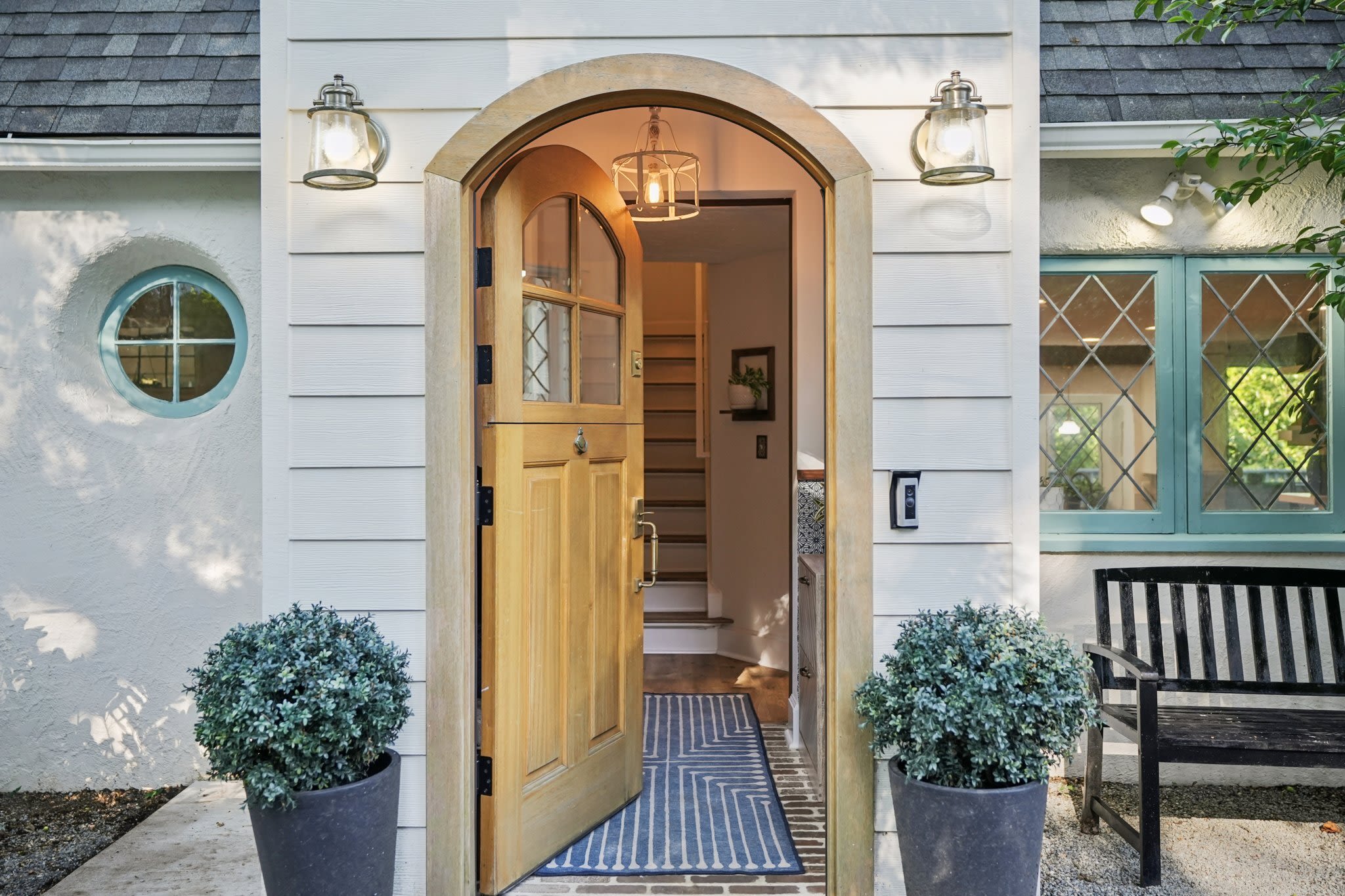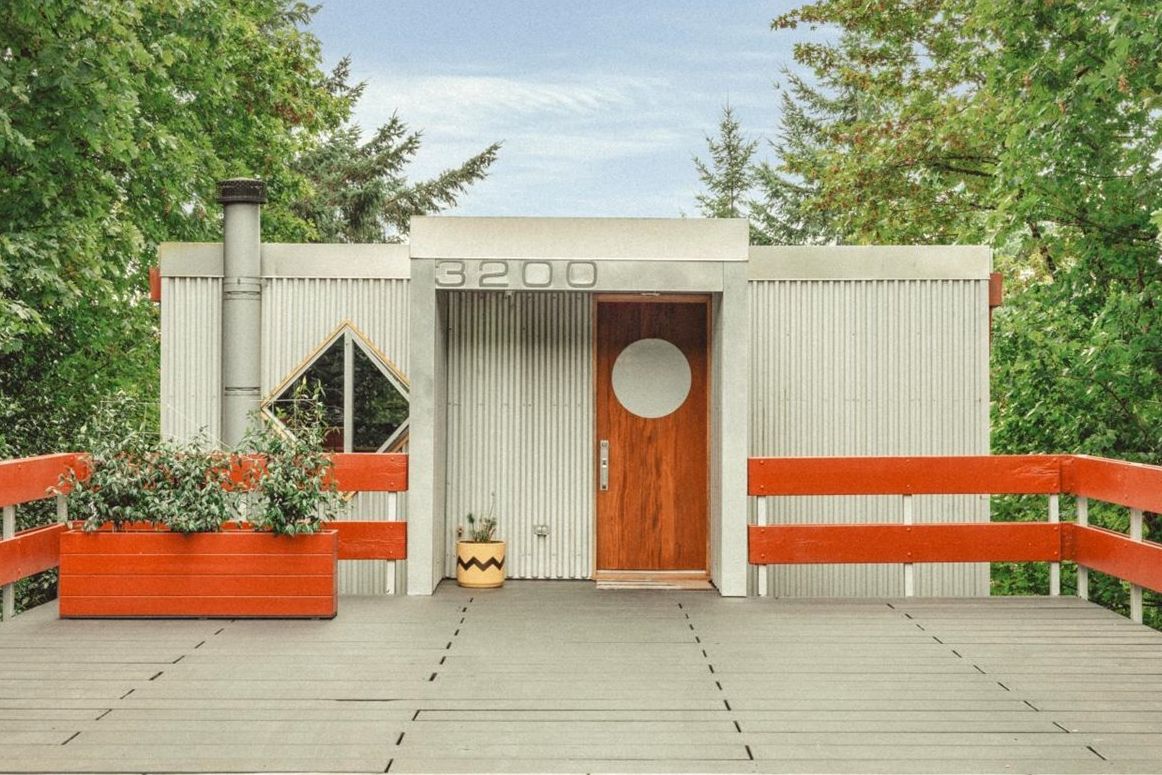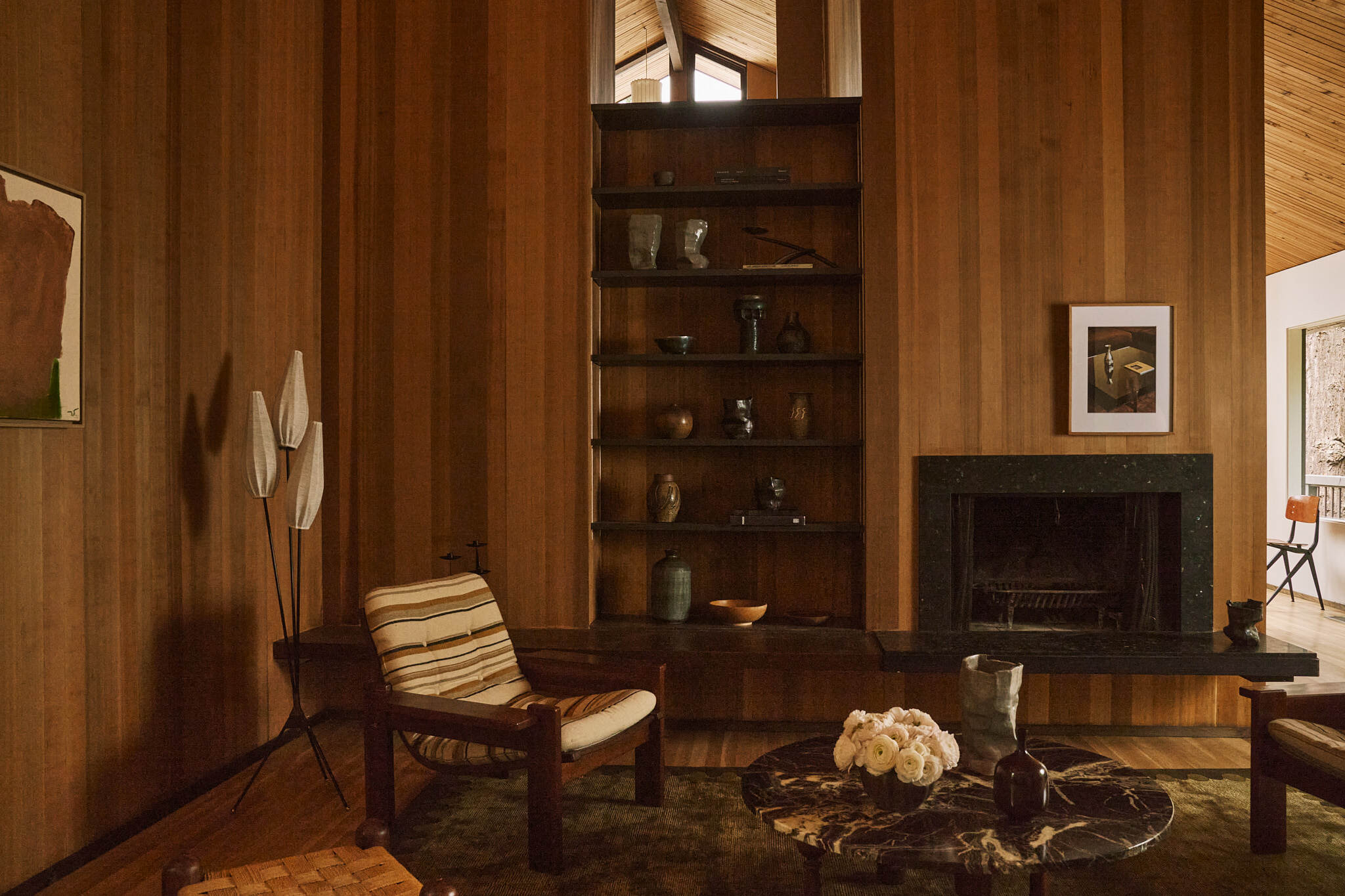A Period-Perfect Midcentury Renovation
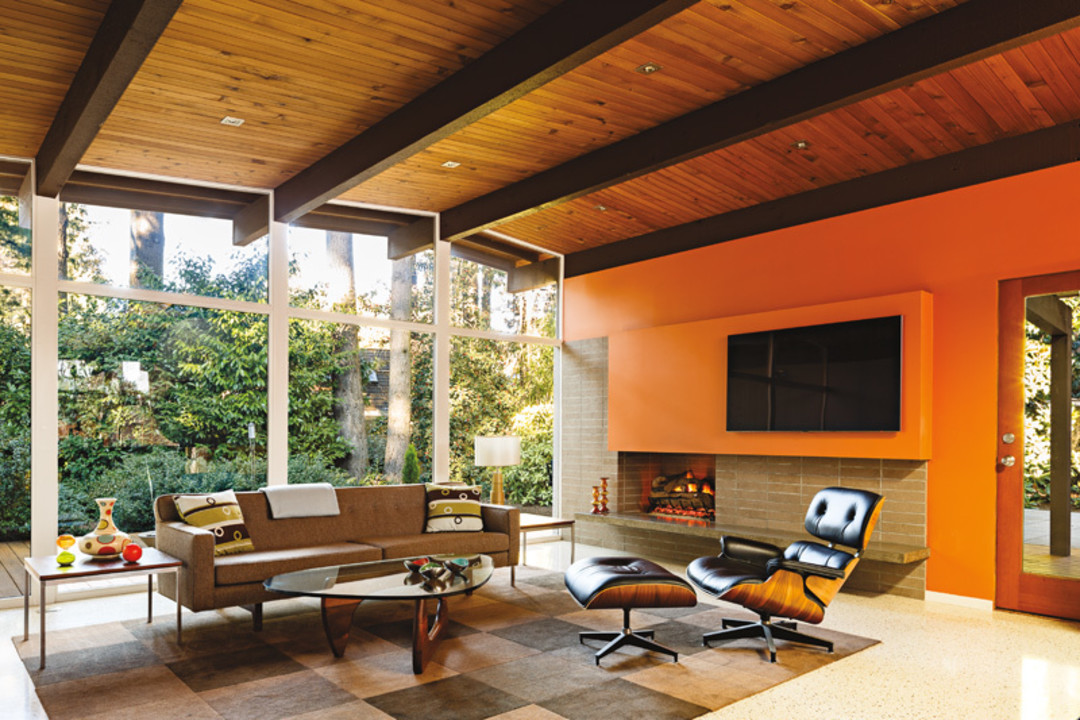
Image: Lincoln Barbour
Knotted wood beams slide overhead in Amanda and Robert Nathan’s home, protruding beyond a massive wall of glass. Sunlight slants through a slatted walnut screen, and a fire crackles within a wraparound fireplace. Everything is meticulously period-appropriate, from the bar’s laminate countertop to the vintage doorbell cover, without being slickly retro—it’s almost impossible to see where the original house ended and the remodel began. As Amanda says, “It looks like most of it was always here, and we just tweaked it a bit.”
Tucked into a quiet, winding street in a woodsy neighborhood of Southwest Portland, the house, built in 1950, is modest. “It wasn’t architecturally significant,” says Robert. “But it seemed homey, and there was so much potential over time. And the exposed beams!”
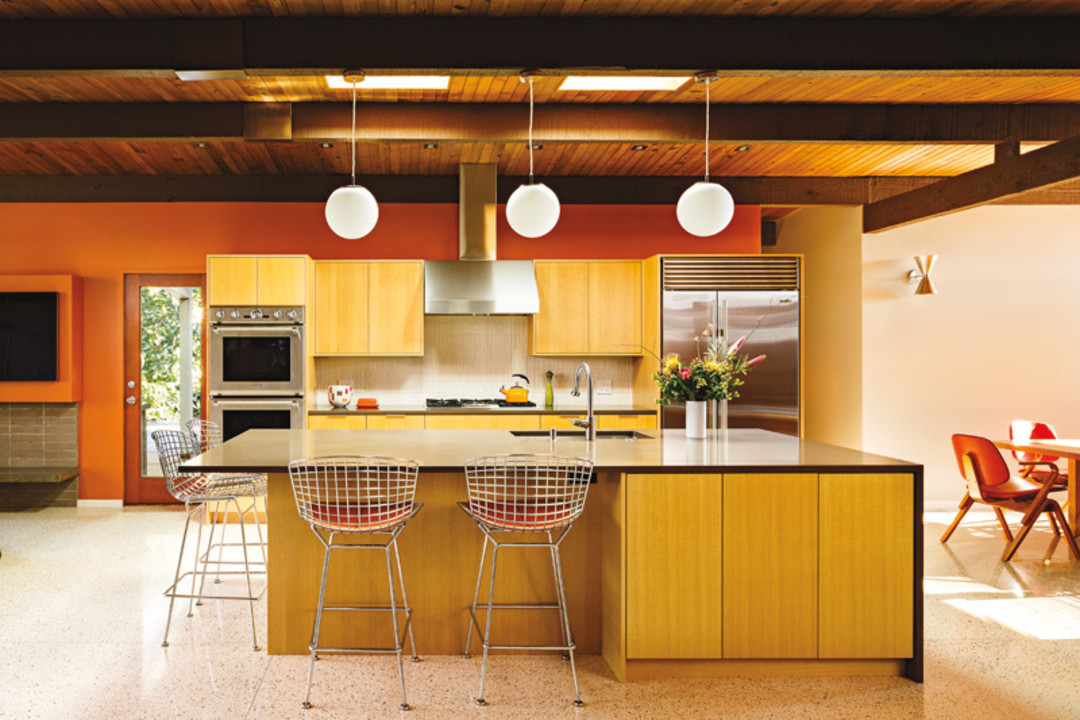
Inspired by the hue of the main wall when they moved in, the Nathans used orange liberally in their home as a bright punctuation point—on everything from the cushions of the Bertoia kitchen stools to a lean vase in their built-in bar.
Image: Lincoln Barbour
What initially appeared cozy, however, soon became cramped for the couple and their two exuberant dogs. In 2006, five years after moving in, they bumped out the two-bedroom house, adding another 900 square feet to the original 1,300 by extending the living room into the leafy backyard and adding a master suite. Updating the old windows with efficient double-pane glass and adding a bit of storage completed the functional remodel.
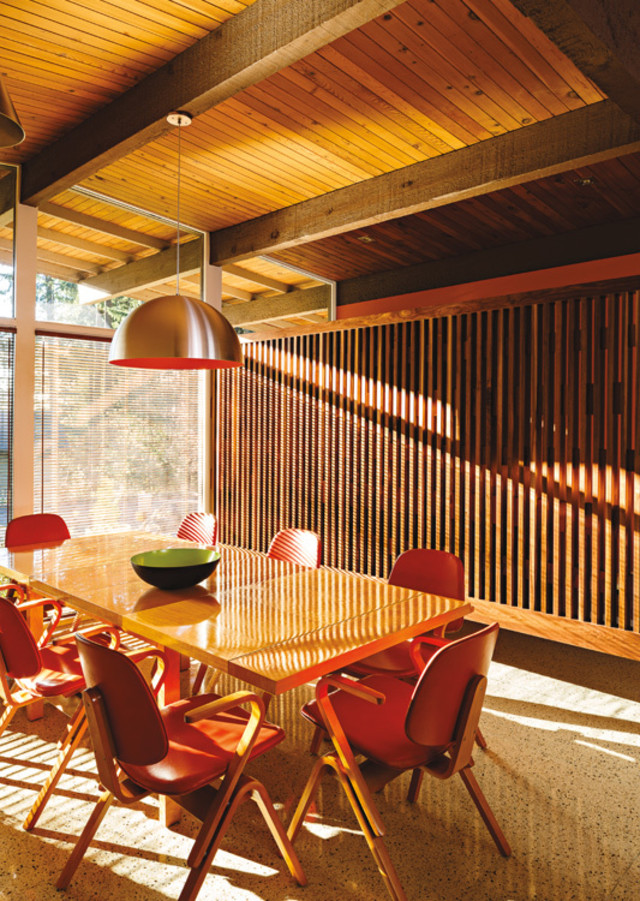
Wooden beams and screens throughout the rest of the house provide additional design warmth, as does the abundance of natural light flowing through the wall of windows.
Image: Lincoln Barbour
Though the renovation gave the Nathans the space they needed, it didn’t give them the midcentury-modern style they desired—so they hired local architect Risa Boyer for an aesthetic overhaul last year. Well-versed in post-and-beam construction, Boyer appreciated the home’s craftsmanship, as well as the Nathans’ desire to stay true to the original architecture. “I love the wood elements of this style of architecture, and the detail and simplicity of how they’re constructed,” she says.
Boyer tackled the kitchen first, ripping down walls to create an uninterrupted space that flows into the living and dining rooms. She commissioned custom, framed-in fir cabinets—common in the ’50s—to accommodate a sprawling center island. A sleek corner wet bar, topped in indestructible laminate, mimics midcentury furnishings with its streamlined form and slender legs, and a vertical walnut screen crafted by Aura Cabinetry lets in light at the entry where a solid wall previously greeted guests.
Inspired by old architecture books, Boyer also wanted to emulate the huge, open-hearth masonry fireplaces of midcentury design, but she knew the home’s foundation couldn’t support that much weight. Instead, she used a lightweight modular fireplace and clad it in brick—achieving a vintage look with modern methods. (Although back then, Boyer notes, “They probably didn’t have a flat-screen TV over the hearth.”)
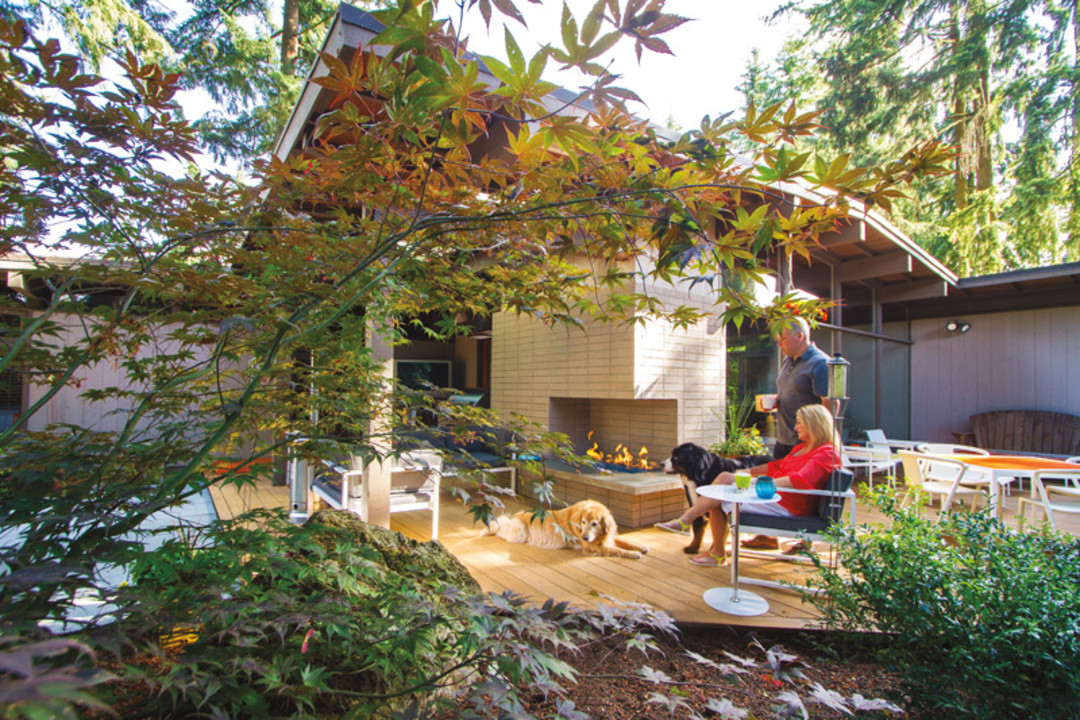
A massive central fireplace anchors both the indoor and outdoor living rooms.
Image: Lincoln Barbour
The fireplace wraps onto the back deck, which Boyer painstakingly re-created. Pushing the overhang out, she carefully lined up the new posts and beams with the originals, so that all structural wood is visually seamless. A built-in grill harks to outdoor barbecues and martinis, and knitted afghans comfort guests on chilly afternoons in traditional style. Indeed, so committed were the Nathans and Boyer to the period aesthetic, they even reused the home’s original gutters to maintain the era’s built-in look. Anything that couldn’t be sourced vintage, such as metal fasteners for the beams, was hidden from sight, requiring additional engineering.
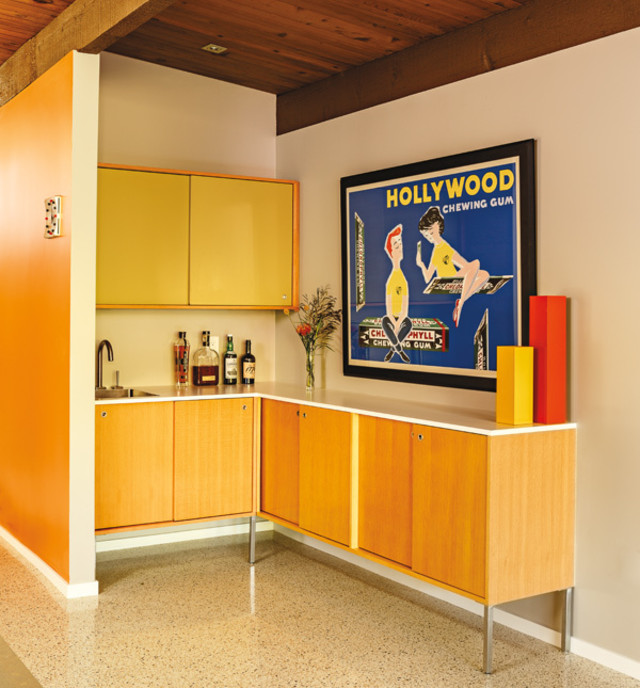
Image: Lincoln Barbour
Lest any detail be overlooked, the Nathans’ interior furnishings are a veritable starting roster of midcentury designers—Noguchi, Eames, Bertoia, Baughman, Gray—all of which Robert has culled over the past decade through eBay and other online resources. Their collection showcases iconic low-slung seats, sinuous curves on tables and lamps, and simple forms. A quirky array of George Nelson clocks tick in the background, the heartbeat of the house, and pops of sprightly oranges and greens flicker throughout, from textiles to a teapot.
“We weren’t midcentury aficionados when we moved in,” Robert admits with a grin. “We slowly converted over and changed our style with time.” Looking around their perfectly updated house, a visitor would be none the wiser.
WISH LIST: Achieving Midcentury Liftoff
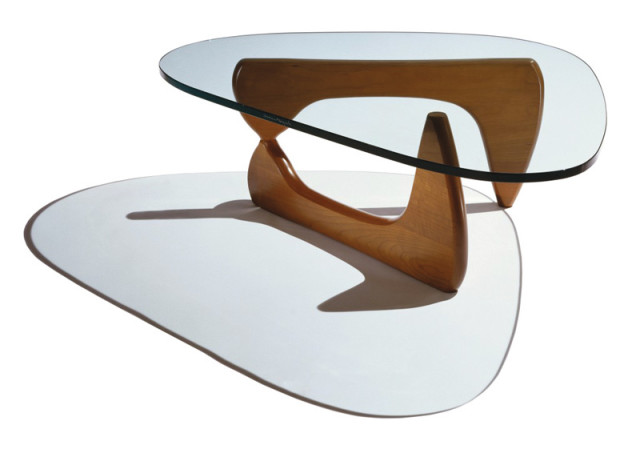
Table Top: Isamu Noguchi’s coffee table has been an icon of modern design since Herman Miller introduced it in 1948. Sculptural and sinuous, a sheet of glass perches elegantly atop a carved wood base, the perfect living-room centerpiece. $1,599 at Hive Modern, 820 NW Glisan St.
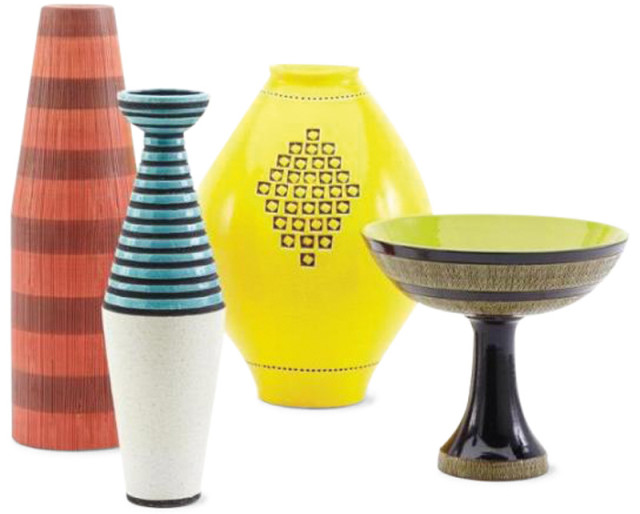
Ceramic Gems: Midcentury masters such as Ettore Sottsass Jr. and Aldo Londi contributed to the success of Italian pottery company Bitossi, with its chunky, hand-thrown ceramic forms. Robert Nathan adds to his growing collection whenever he spots one in orange. Find on eBay or Etsy.
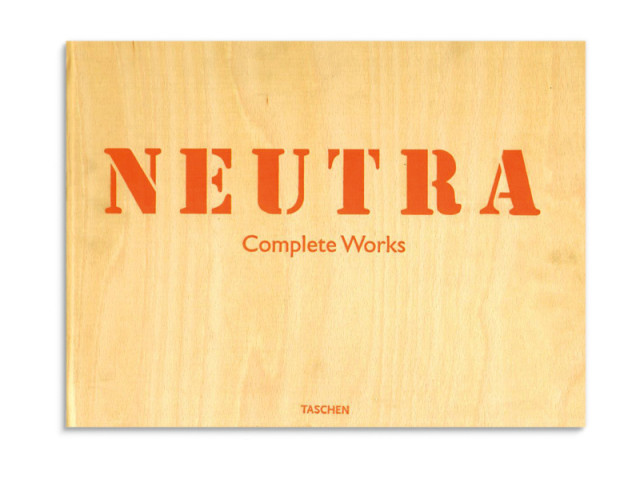
Reading Material: Books like Neutra: Complete Works by Barbara Mac Lamprecht and Peter Gössel illuminate the architects who made flowing, indoor-outdoor spaces hallmarks of mid-century style. “They’re not there just for display; I actually look through them,” says Robert of his carefully curated collection. $69.99 at Powell’s.
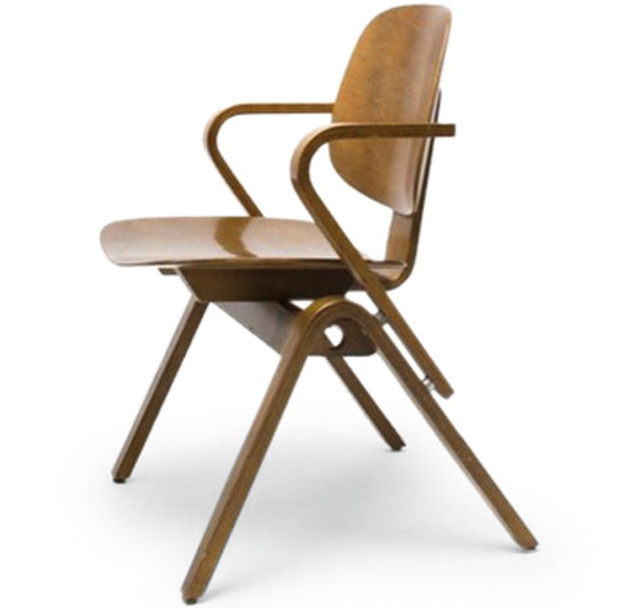
Practical Seats: With their friendly arms and perky shapes, these modest bentwood seats were designed by Joe Atkinson for Thonet in the late 1950s. They surround the Nathans’ dining table, the seats still clad in their original orange vinyl upholstery. Find on 1stDibs.com or eBay.
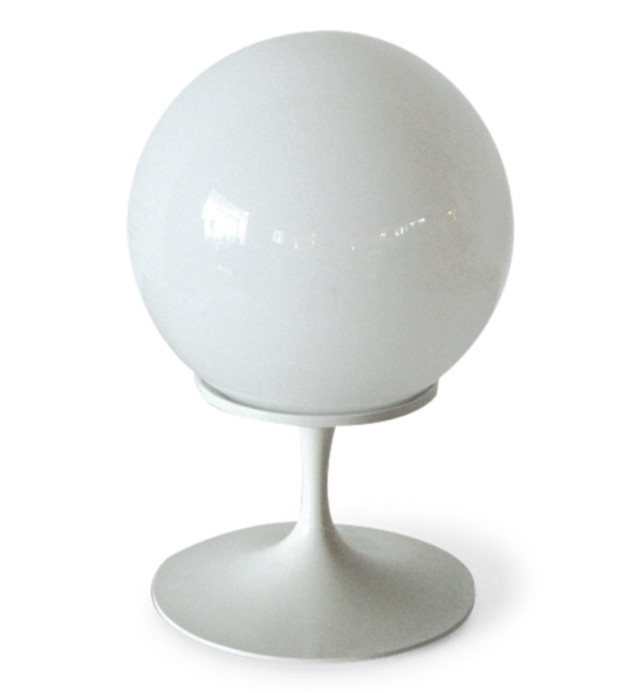
Mood Lights: Bill Curry created a line of cheerful lamps called Stemlite for his company Design Line in the mid-1960s. Glowing orbs and puffy mushrooms settle atop spindly supports in these sprightly lights—the Nathans have two in their offices. Find on 1stDibs.com.
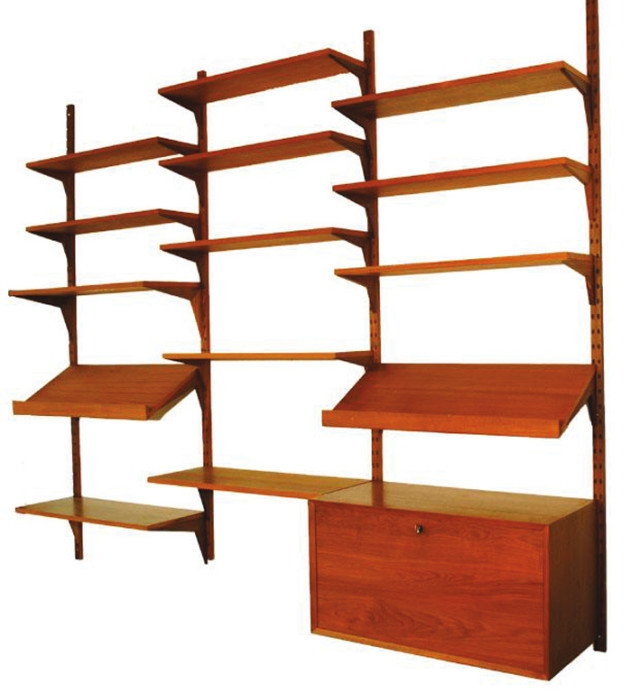
Chic Storage: Though their homes might look sleek and minimalist, even midcentury modernists need a place to stash their stuff. The Nathans store their cookbooks, football figurines, and extra dishware in the customizable floating “Cado” wall units that Dutch architect Poul Cadovius created in 1957. Find Cado systems on eBay or Etsy.
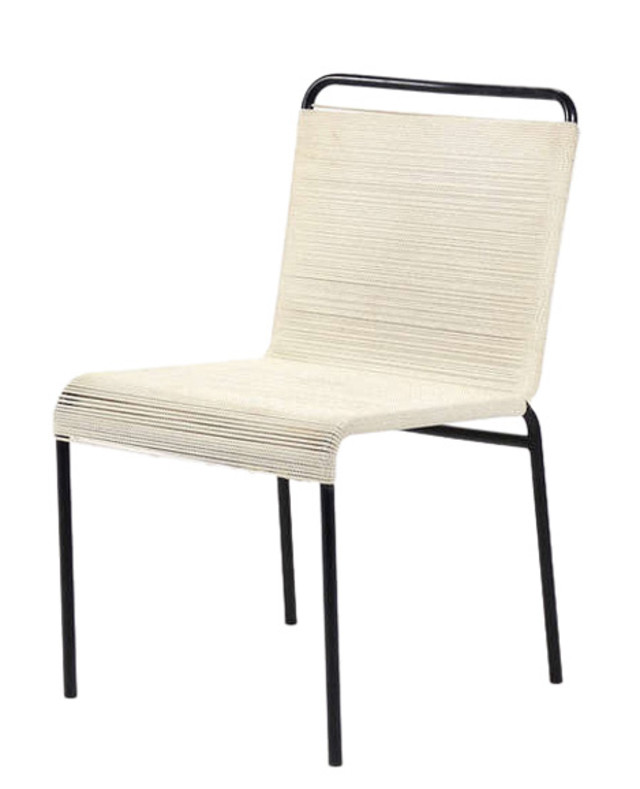
Clean Lines: From the 1930s until a fire destroyed their company in 1970, Californian designers Van Keppel–Green made clean, functional furniture intended for both inside and out—and used by renowned architects like Richard Neutra and Pierre Koenig. Find on 1stDibs.com.
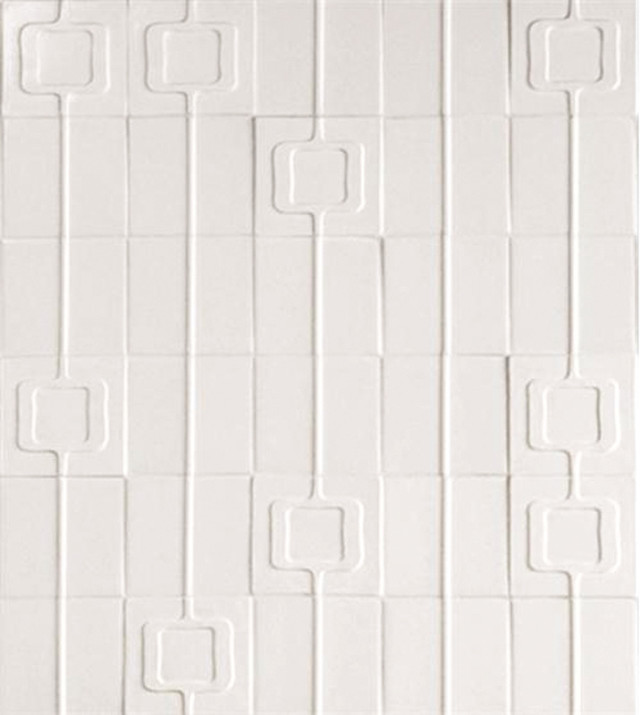
Tile Style: “The shape is definitely reflective of midcentury—you would have seen partial entry walls or mobiles with that shape on it,” says Robert of the gently curved geometrics of the Manfred Deco tiles on their kitchen backsplash, by Angela Adams for Ann Sacks. $34.92/square foot at Ann Sacks, 402 NW Ninth Ave.
